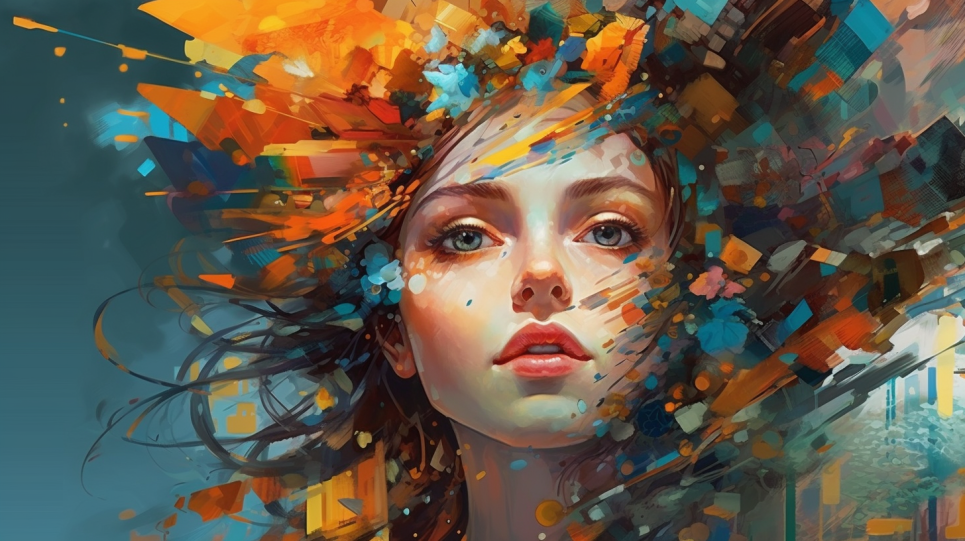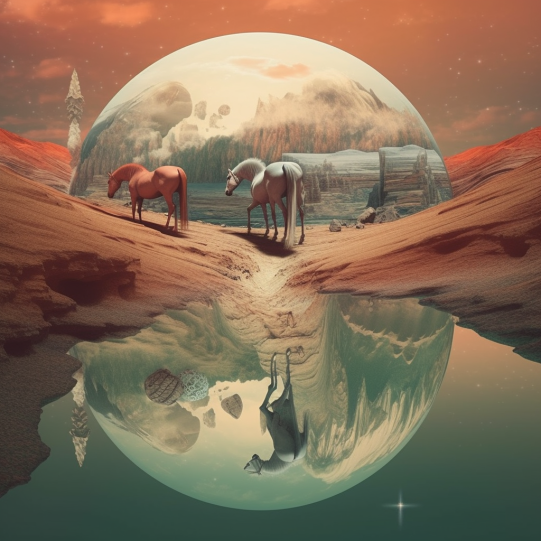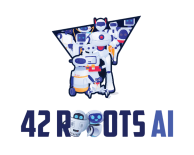What is Stable Diffusion (AI Art Generator)?
Stable Diffusion is an AI-based art generator that uses advanced machine learning techniques to create unique and creative visual art. It leverages a technique called diffusion, which is a natural process by which particles or substances spread from areas of high concentration to areas of lower concentration until they reach equilibrium. In the context of AI art generation, the term ‘diffusion’ refers to the gradual process of generating an image by modeling it as a random walk through the space of all possible images.
The technology behind Stable Diffusion typically builds upon deep learning models such as Generative Adversarial Networks (GANs) or Variational Autoencoders (VAEs), which have been widely used for image synthesis and other creative applications. These models learn to generate new images by capturing the underlying structure and patterns in a given dataset of images, such as photos or paintings.
Stable Diffusion uses a combination of learned priors and a carefully designed optimization process to guide the random walk through the space of images. By controlling the rate and direction of diffusion, the AI art generator can create visually compelling and diverse images, often with unique and surprising artistic effects.
As an AI Art Generator, Stable Diffusion has a wide range of applications in digital art, design, advertising, and entertainment, offering artists and designers a powerful tool for generating innovative and inspiring visual content.

How does Stable Diffusion Work?
Stable Diffusion works by leveraging a combination of machine learning techniques, optimization processes, and carefully designed priors to generate visually compelling images. The key steps in the Stable Diffusion process are as follows:
Data collection and preprocessing:
The first step involves collecting and preprocessing a large dataset of images that represent the desired artistic style or subject matter. This dataset serves as the training data for the machine learning model.
Training a deep generative model:
A deep learning model, such as a Generative Adversarial Network (GAN) or a Variational Autoencoder (VAE), is trained on the dataset to learn the underlying structure and patterns. The model learns to generate new images that resemble the training data, capturing the essential features and styles of the input images.
Learning a diffusion model:
Along with the generative model, a diffusion model is also trained. This model learns to estimate the distribution of the noise that is added during the diffusion process. It essentially learns how the images evolve as they diffuse from a noisy initial state to the final generated image.
Noise injection and optimization:
During the image generation process, an initial noisy image is created by sampling from a predefined noise distribution. The noisy image is then gradually refined through a series of optimization steps, guided by the learned diffusion model and the generative model’s priors. The optimization process typically involves minimizing a loss function that measures the difference between the generated image and the target distribution.
Controlling the diffusion process:
The rate and direction of diffusion are controlled by adjusting various hyperparameters, such as the number of optimization steps, the learning rate, and the temperature of the noise distribution. These parameters can be fine-tuned to create images with specific artistic effects or to explore different regions of the image space.
Post-processing and visualization:
Once the optimization process is complete, the final generated image can be post-processed and visualized. This may involve additional steps, such as applying color transformations, cropping, or resizing the image to meet specific requirements.
By iteratively refining the noisy image through the guided diffusion process, Stable Diffusion can generate a wide range of visually compelling and diverse images, often with unique and surprising artistic effects.
What AI Art Generators use Stable Diffusion?
Many of the best AI image generators use Stable Diffusion or were, at one point in the past, started from Stable Diffusion. For example, DreamStudio is based upon Stable Diffusion.
However, some are quite unique. For example, Midjourney and Dream by Wombo both seem to be quite different, if it was ever based upon or influenced heavily by Stable Diffusion.

How do you create an Image with Stable Diffusion?
To generate an image using the Stable Diffusion Online site, follow these steps:
- Visit the site and click “Get started for free.”
- Enter a description of your desired image in the prompt field.
- Click “Generate image” to display four images based on your description.
- To select an image, click on one of the four generated pictures to view it larger. You can switch between images by clicking the thumbnails. Right-click to access browser options for saving, copying, or emailing the image.
- If unsatisfied with the generated images, click “Generate image” again to receive four new suggestions based on the same prompt.
Is Stable Diffusion AI free?
Yes, Stable Diffusion is open source and also you can use it for free here: https://stablediffusionweb.com/#demo
Is Stable Diffusion as good as DALL-E?
Yes, they are of similar quality. To be fair, it is not exactly comparing apples to apples since there are many versions of Stable Diffusion since it is open source and only 1 active version of DALL-E because it is closed source and created by OpenAI.
DALL-E 2 and Stable Diffusion are advanced AI systems capable of generating realistic images and art from text prompts.
DALL-E 2, developed by OpenAI, offers a sleek interface and provides users with a limited number of free credits. Stable Diffusion, developed by Stability AI, is open-source and accessible through various platforms, offering different pricing structures and free credits. The choice between the two depends on personal preferences and project requirements.
It’s recommended to test both applications to determine the best fit for your creative needs.
Does Midjourney use Stable Diffusion?
No, Midjourney does not use Stable Diffusion. It appears to have been created independently. However, since Stable Diffusion is open source, it is possible, Midjourney learned lessons from Stable Diffusion.
How Do I Install Stable Diffusion on My Own Computer (PC or Mac)?
Here’s a good video on how to install stable diffusion on your computer:

